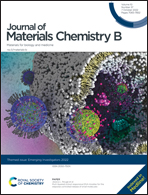Magnetomechanical force: an emerging paradigm for therapeutic applications
Abstract
Mechanical forces, which play a profound role in cell fate regulation, have prompted the rapid development and popularization of mechanobiology. More recently, magnetic fields in combination with intelligent materials featuring magnetic responsiveness have been identified as a spatially and time-controlled transducing paradigm to generate magnetomechanical forces and induce a therapeutic effect. Herein, recent magnetic materials and magnetic regulation systems are summarized, which offer opportunities for magnetomechanical force manipulation in a precise manner. Additionally, promising applications based on magnetomechanical force including drug controlled release, cancer therapy, and regenerative medicine are highlighted, with respect to both in vitro and in vivo. Furthermore, perspectives on the further development of magnetomechanical force are commented on, mainly emphasizing scientific restrictions and exploitation directions.

- This article is part of the themed collection: Journal of Materials Chemistry B Emerging Investigators


 Please wait while we load your content...
Please wait while we load your content...